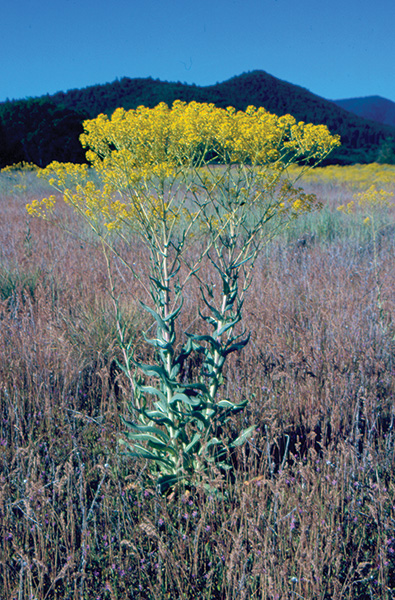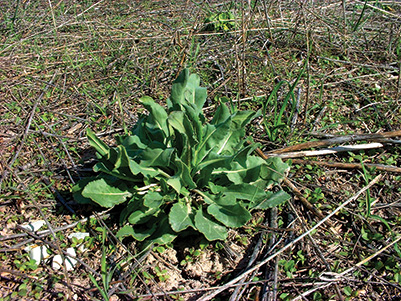Stem
- Up to 4 ft. tall; branched at top; dry plants with attached seed pods remain standing into winter

Dyer's woad flowering plant
Leaves
- Lance-shaped, 1-7 in. long, bluish-green and lack hair (glabrous) with a distinct whitish mid-vein; edges (margins) are wavy to smooth, stem leaves are alternate with lobed base that clasps the stem

Dyer's woad rosette
Flower
- Yellow with 4 petals; occur in clusters that give plant a flat-topped appearance
- Mature seed pods dark brown to black, oblong, flattened and suspended from a small stalk; each contains a single seed
Other
- Grows well on a broad range of sites; often infests waste areas, roadsides, rangeland, pastures and crop fields; known to occur in Elko, Humboldt and White Pine counties
- Biennial, but sometimes annual or perennial; reproduces by seed
- Historically cultivated for use as a blue dye and as a medicine
Control
- Mow in early-flower to reduce seed production; spring tillage or digging individual plants prior to seed production can be effective
- Apply 2,4-D to young, actively growing plants; apply aminocyclopyrachor, chlorsulfuron, imazapic or metsulfuronon pre- and post emergence
Blecker, L., Creech, E., Dick, J., Gephart, S., Hefner, M., Kratsch, H., Moe, A., Schultz, B.
2020,
Nevada Noxious Weed Field Guide – Dyer's woad,
Extension, University of Nevada, Reno, Field Guide


